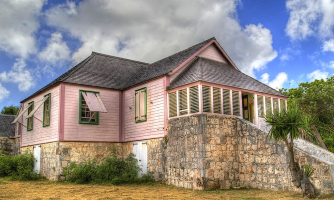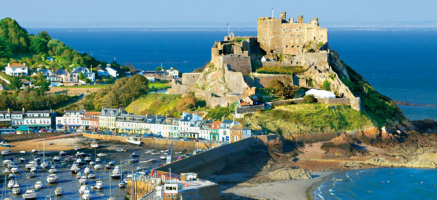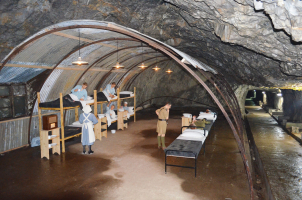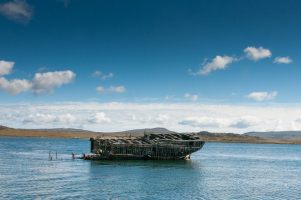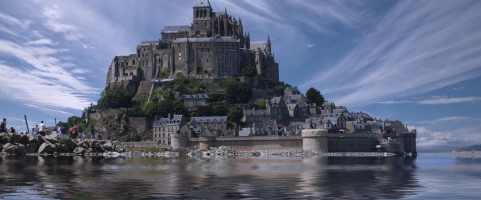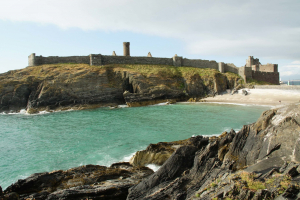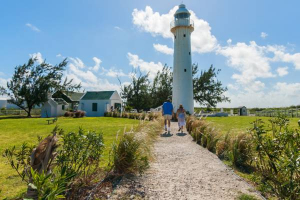Top 5 Most Beautiful Historical Sites in Montserrat (UK)
Known as the "Emerald Island" of the Caribbean, magnificent Montserrat exists as a somber spectacle of the terrifying power of nature. Not only that, ... read more...Montserrat is also famous for having a long civilized history along with the most beautiful historical sites in Montserrat. The following article of Toplist will introduce and provide you with more information about these historical places.
-
Abadia de Montserrat is a Benedictine monastery in Monistrol de Montserrat, Catalonia, Spain, located on Mount Montserrat. It is famous for maintaining the Virgin of Montserrat's picture. The monastery, which was founded in the 11th century and restored between the 19th and 20th centuries, is still active today, with more than 70 monks in residence at any given time.
Abadia de Montserrat was first built in the 16th century, and it was completely rebuilt in 1811 after being devastated during the Peninsular War. It was given basilica status by Pope Leo XIII in 1881. The facade, designed by Francisco de Paula del Villar y Carmona in the Plateresque Renaissance style and featuring Venanci and Agapit Vallmitjana I Barbany's sculptural reliefs, was completed in 1901. The church has only one nave, which is 68.32 meters long, 21.50 meters wide, and 33.33 meters tall. The Virgin's chamber, located just above the main altar and accessible through a plaster gate (Porta Angèlica), contains several biblical scenarios depicted by Enric Monjo (1954 ). A number of chapels surround the middle nave. The chapel of Saint Peter, with the picture of Saint Peter by Josep Viladomat (1945), is on the right, Venanci Vallmitjana's chapel of Saint Ignatius of Loyola with Ramir Lorenzale's artwork, Saint Ignatius (1893).
According to legend, the Virgin Montserrat statue was discovered in the year 880. The worship of the virgin Moreneta then began, which had previously been practiced in four hermitages in the 9th century: Santa Maria, Sant Iscle, Sant Pere, and Sant Mart. The monastery's origins, however, are unknown. Around 1011, a monk from the monastery of Santa Maria de Ripoll ascended the mountain to take leadership of the monastery of Santa Ceclia de Montserrat, leaving the monastery under Abbot Oliba of Ripoll's authority. Santa Maria has had her own abbot since 1082 and is no longer reliant on the abbey of Ripoll. Because of the Virgin Mary statue that has been revered in it since 880, this hermitage has become the most important of all the sanctuaries on the mountain.
The beauty of Abadia de Montserrat is the ancient classic beauty, especially the beauty that enhances the character of Montserrat. You will be surprised when you visit the monastery because Santa Maria de Montserrat Monastery was built in front of the majestic rocky mountains, which makes the monastery not only bring the ancient classical beauty but it also has a unique character. majestic beauty, horns holding the rocky mountains. With such beauty, Abadia de Montserrat is recognized as one of the most beautiful historical sites in Montserrat.
Today, the Monastery is used for prayers and religious ceremonies. The monastery not only brings a beauty that not every monastery has, but it is also a sacred place, a place to pray for peace. Come to Montserrat to visit and admire the beauty of the monastery of Santa Maria de Montserrat.
Location: the mountain of Montserrat in Monistrol de Montserrat, Catalonia, Spain
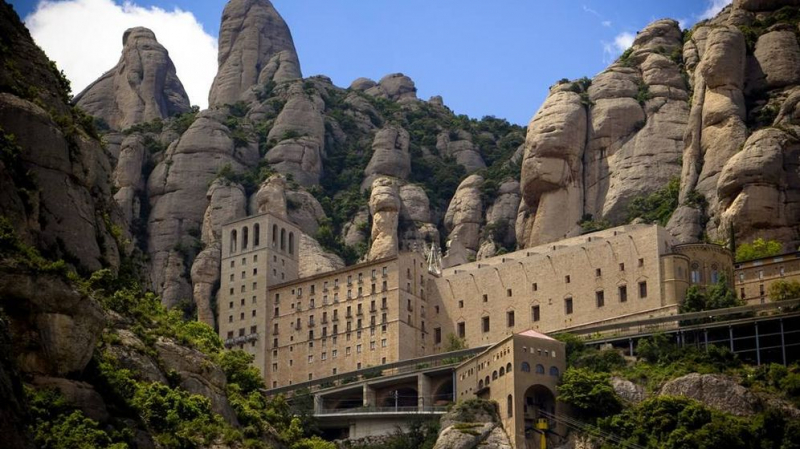
Photo: https://images.ecestaticos.com/ 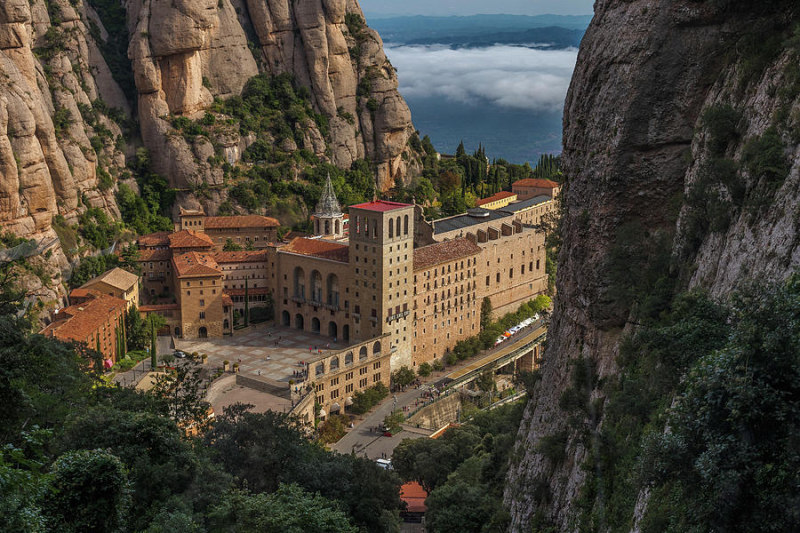
Photo: https://images.fineartamerica.com/ -
The Basilica de Montserrat began construction in the 16th century and was completely rebuilt in 1811 after being devastated during the Peninsular War. It was designated as a minor basilica by Pope Leo XIII in 1881. The facade, designed by Francisco de Paula del Villar y Carmona in the Plateresque Renaissance style and featuring Venanci and Agapit Vallmitjana I Barbany's sculptural reliefs, was completed in 1901.
The square in front of the church is adorned with sgraffitos (1956) by Josep Obiols I Palau and the ponton Benet Martnez, which portray Montserrat's history and the world's major basilicas. Saint Anthony Mary Claret (1954), by Rafael Solanic; John I of Aragon (1956) and St. Gregory the Great (1957), by Frederic Marès; and St. Pius X, by F. Bassas, are among the statues in the square. The baptistery (1958) is on one side, with a Charles Collet-sculpted gate, and a mosaic by Santiago Padrós (1918-1971) and Josep Vila-artwork Arrufat's The Baptism of Jesus on the other. A sculpture of Saint Ignatius of Loyola, created by Rafael Solanic, is next to the baptism.
The church has only one nave, which is 68.32 meters long, 21.50 meters wide, and 33.33 meters tall. The prophets Isaiah, Jeremiah, Ezekiel, and Daniel are represented by center columns carved in wood by Josep Llimona I Bruguera. The main altar, which was painted with enamel by Montserrat Mainar in 1928 and depicts biblical events such as the Last Supper, the Wedding of Cana, and the Humanity of Loa and Fish, is at the top. Lorenzo Ghiberti created the 15th-century crucifix on the altar. There is an octagonal altar on the altar. Various paintings by Alexandre de Riquer, Joan Llimona, Joaquim Vancells, Dions Baixeras, and Llus Graner can be found in the cancel.
The Basilica de Montserrat's exterior has a stone bottom sculpted in ash stone with piled sculptural design, as does the University of Salamanca's silver façade. The bottom is horizontal, with three vertical stripes dividing it. A door with a sculpted tympanic membrane opens on each strip, and the strips are separated by Corinthian columns supporting a septum; these columns are raised above the doors, creating an undulating rhythm. The upper half of the façade is oriented vertically and, unlike the lower part, does not take up the entire width of the façade, but rather sits in the middle. The figures of Jesus and the twelve apostles with individual canopies come first, followed by a great rose window flanked by columns and reliefs, and a clock on the top level. There is a cross at the end. Arcadi Pla, I Masmiquel rebuilt the basilica between 1991 and 1995. Sean Scully rebuilt the Santa Cecilia Chapel, which is located next to the convent, in 2015.
No wonder the Basilica De Montserrat is the second most beautiful historical site in Montserrat. Because the great architecture of the Basilica De Montserrat will amaze you, its beauty shimmering under the dim lights makes the Basilica De Montserrat even more beautiful. Not only that, the old sculptures on display at Basilica De Montserrat are even more honorable than ancient beauty. Today, the Basilica De Montserrat is a venue for concerts and choirs. You come to Basilica De Montserrat not only to admire the beauty here but also to enjoy free music.
Location: Montserrat Mountains
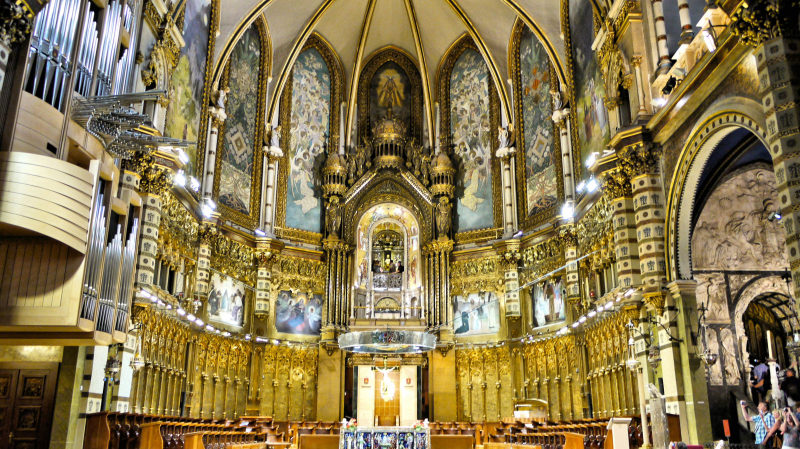
Photo: https://i.pinimg.com/ 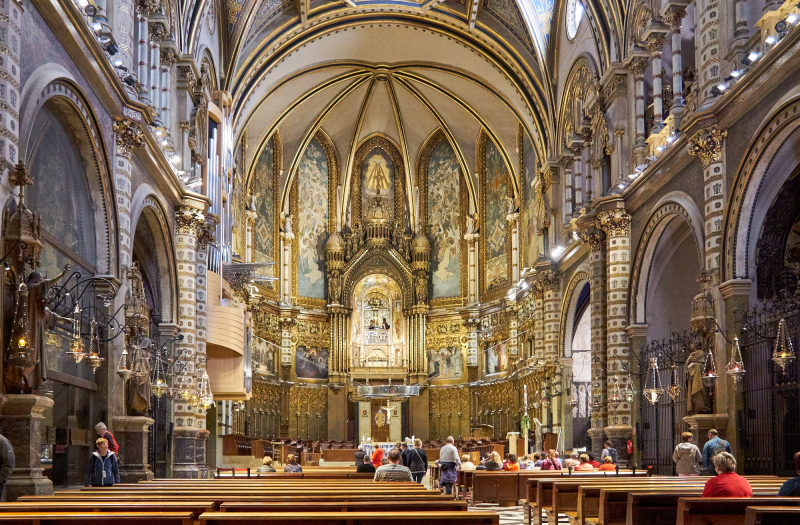
Photo: https://content.11route.com/ -
The Virgin of Montserrat was allegedly concealed during Moorish conquests and later discovered by shepherds in 880 in Santa Cova de Montserrat, a mountain cave on Montserrat. As a result of its discovery, Montserrat became a pilgrimage destination as the Monastery of Santa Maria de Montserrat was founded.
A route built into the mountainside leads to Santa Cova's refuge, known as the Cam de la Santa Cova. It was constructed under the patronage of Gertrudis de Camporrell, Queen of Tamarit, between 1691 and 1704. From 1896 to 1916, a series of sculptures dedicated to the rosary and the 15 mysteries of the Virgin were installed along the Cam, including works by Antoni Gaud, Josep Puig I Cadafalch, and other neo-modernist artists.
According to legend, the image of the Mother of God was discovered in the Holy Cave. This is referenced for the first time in a manuscript dated 1239. According to legend, some shepherds witnessed the so-called "great light" falling from the sky on a Saturday towards sunset in the year 880. In the highlands, there is a "wonderful melody" that goes with the light. The shepherd children and their parents returned to the highlands with their parents on Saturday following the event. A second time, the vision appears. This pattneighbouring ern repeated again for the next four Saturdays. The princeneighboring Olesa was also present. The news reached Bishop Manresa, who was informed of the events. On a Saturday, he planned a trip to the mountains.
The chapel next door, "La Capilla de la Santa Cueva," is well worth a visit when visiting the Holy Grotto. The chapel was designed to give the impression of merging with the cave and becoming one with it. The chapel was built in the late seventeenth and early eighteenth centuries (1696–1705). Its architectural significance is due to its extremely high support walls. Because of the mountain's slope, they are required. It is critical to maintaining silence when entering and exiting the chapel. Inside the Chapel of the Holy Grotto, there is a smaller chapel that is fashioned like a cross and is supported by a rock mass in the mountain.
The beauty of Santa Cova de Montserrat is more beautiful than ever when it is located on a cliff. That is the natural beauty of the mountains and the lush green of the trees that add to the beauty of Santa Cova de Montserrat. That beauty is even more sacred when Santa Cova de Montserrat is a place of pilgrimage for people here. What could be better when Santa Cova de Montserrat is both a sacred place and the third most beautiful historical site in Santa Cova de Montserrat.
Location: the Santa Maria de Montserrat monastery on the Montserrat Mountain in Catalonia, Spain
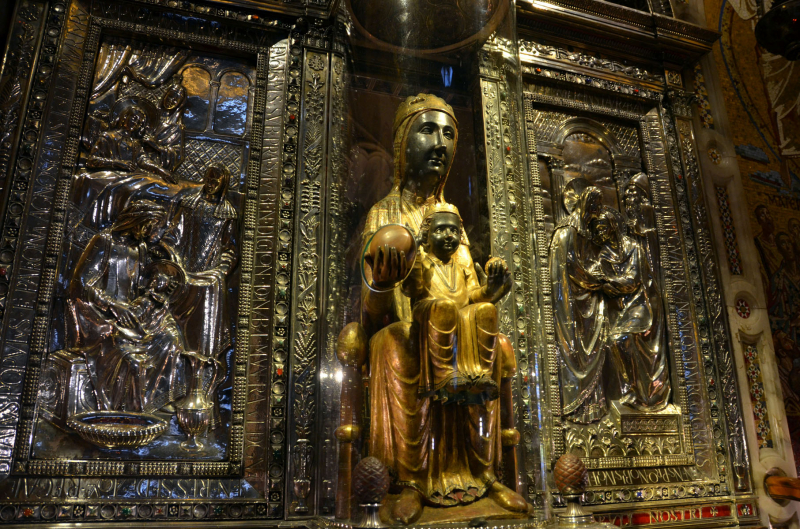
Photo: https://kondazian.com/ 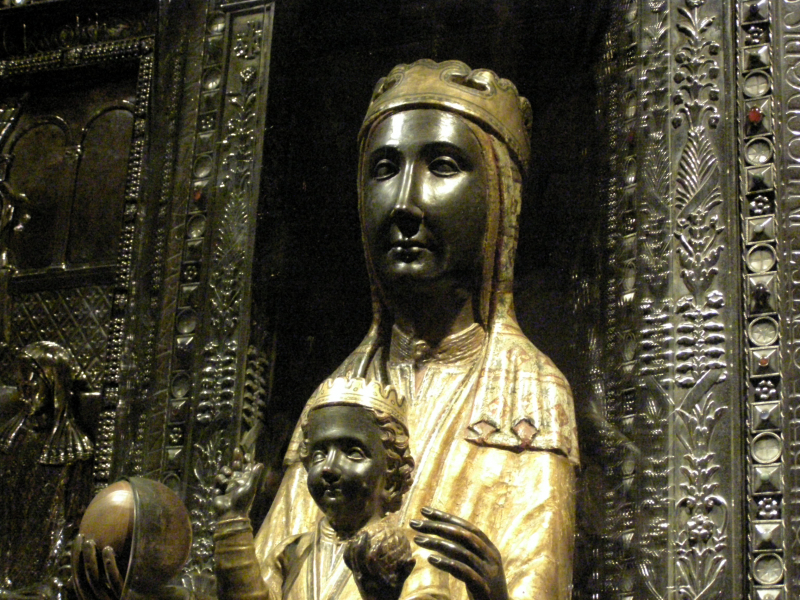
Photo: https://www.blackhistoryinthebible.com/ -
Santa Cecilia is a reconstructed 10th-century Romanesque convent positioned at the back of the Montserrat mountain, offering breathtaking views of the Montserrat peak and the river valley beyond. The site and church are worth seeing on their own and are accessible by truck from Montserrat Monastery. A display beside the entry traces Santa Cecilia's long and varied history (including its 1928 restoration by famed modernist master Puig I Cadafalch). But there's a lot more to it. Sean Scully, a contemporary Irish artist, was granted permission to decorate the entire cathedral with his work, transforming the interior into an "art space." The entire effect is both lovely and peaceful.
History has been banging on the door of the abbey of Santa Cecilia de Montserrat for thousands of years, located above the hills overlooking Barcelona, perched on towering rocks that reach out like enormous fingers pointing to the sky. During the Franco regime, it served as a sanctuary for early pilgrims, a symbol of resistance during Napoleon's invasion, and a guardian of Catalan culture and language.
This little chapel, which is still occupied by the Benedictines, has resurfaced on the map. During a 10-year restoration project, renowned Irish painter Sean Scully transformed the chapel with 22 of his works, ranging from his famous huge abstract paintings to frescoes, stained glass, and metal candlesticks. They plan to hang themselves in the chapel for the rest of their lives, building the church as a unique cultural sanctuary that attracts visitors from all over the world.
When visitors enter the small church, which has been repaired for the first time since the 1920s, they are met by one of Scully's vast gray and black Doric murals. The greatest sculpture, a sequence of 14 panels encased in dark steel, dominates the monastery's last wing. While the 14 plaques obliquely allude to the stations of the cross, this project honors Scully's mother, Ivy, whose works are given. With unique architecture and historical beauty preserved for thousands of years, Santa Cecilia de Montserrat has been on the list of the most beautiful historical sites in Montserrat.
Location: Montserrat Moutains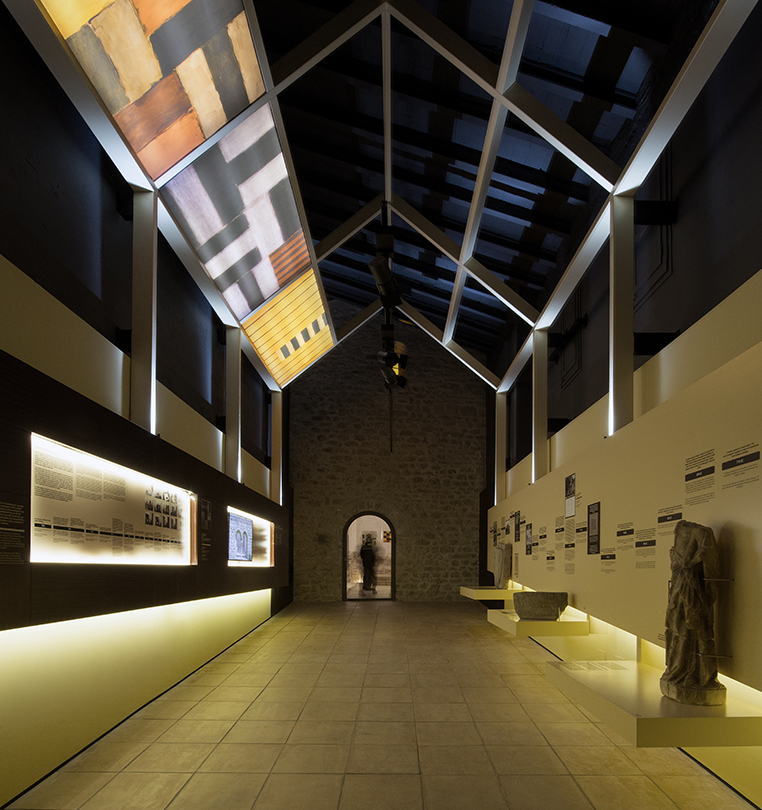
Photo: https://www.playmedia.biz/ 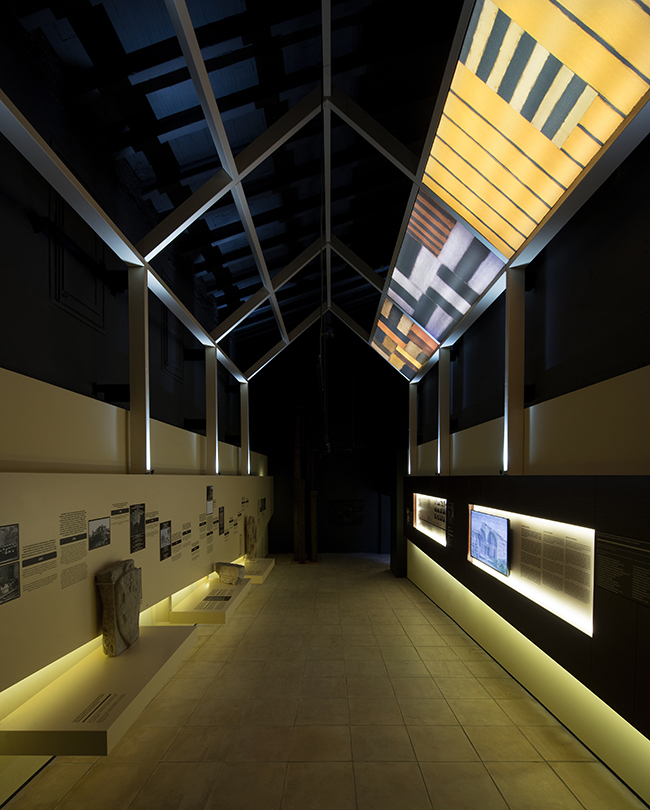
Photo: https://www.playmedia.biz/ -
The Stairway to Heaven in Montserrat, Spain, is one of Spain's holiest sites, which explains why it's a favorite pilgrimage destination for locals. Josep Maria Subirachs, one of the most famous Spanish sculptors and painters of the time, designed the Stairway to Understanding, also known as Escala de l'Enteniment. His work is outstanding.
Ramon Llull1, a philosopher, mystic, and missionary from the Kingdom of Majorca, inspired Josep Maria to design and build this monument. Llull's opinions are presented in Subirachs' Monument a Ramon Llull, in which he categorizes many artistic subjects. As a result, this memorial is made up of eight rectangular bricks arranged in a spiral to depict seven separate beings and their life hierarchical order.From the top to the highest rock, each layer of the monument portrays the following creatures: The order is rock, fire, vegetation, beasts, mankind, heaven, angels, and God at the top. The physical world includes rocks, fires, and plants, whereas the mental world includes the last three. We exist in both worlds, and our dual existence makes us both greedy and virtuous. Our selections keep us on the lower end of the scale or move us closer to the top. Nine parallel shapes form a series of steps that unfurl in a fan-like pattern. Only the last one, which represents God, is geometrically perfect, being a cube with polished edges on all sides.
The 13th-century philosopher's memorial stands for more than 40 years and sits on the edge of a picturesque landscape, just a few steps from the convent of Santa Maria de Montserrat. From a distance, this impressive spiral structure appears to be rising hundreds of meters above the valley floor, providing some of the most beautiful forms of inclination. Existence has long gone through the tempering of nature but still retains the lonely beauty among the vast mountains. With these features, Stairway to Heaven deserves to be on the list of the most beautiful historical sites in Montserrat.
Location: The monument is very closely situated to the Abbey of Montserrat, which belongs to the Order of Saint Benedict.
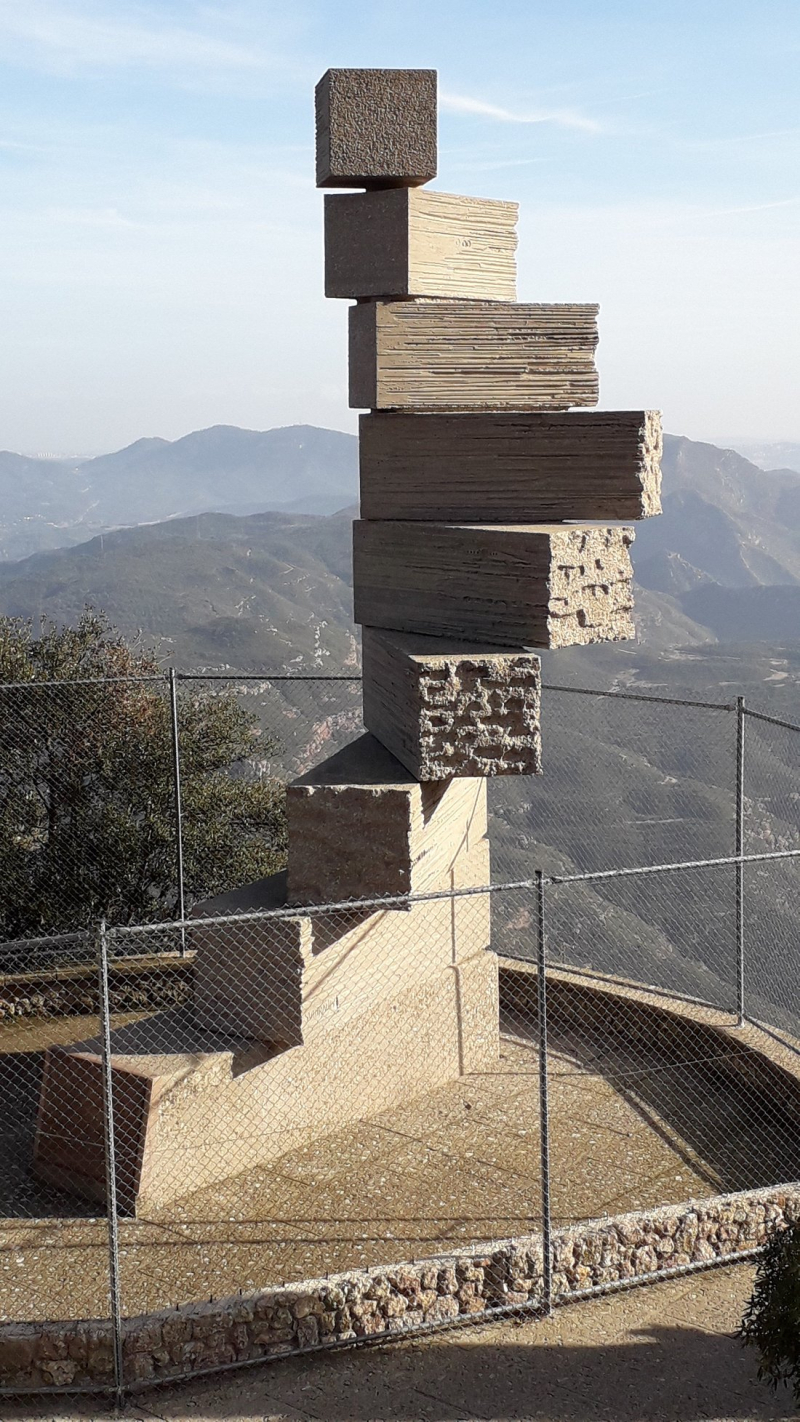
Photo: https://www.tripadvisor.com/ 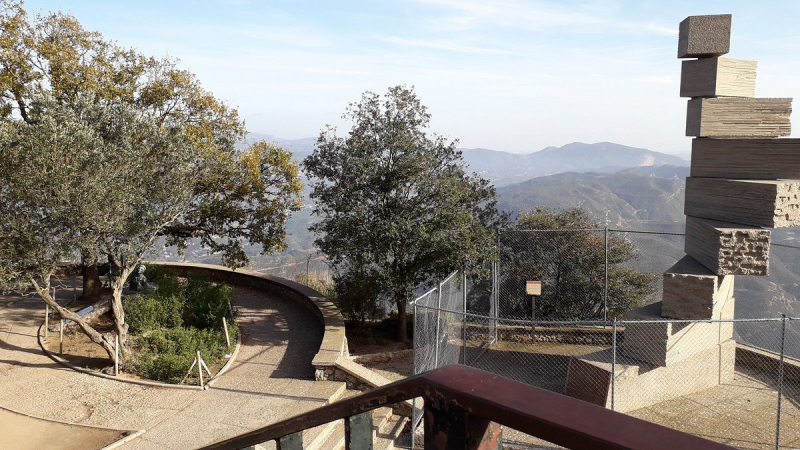
Photo: https://www.tripadvisor.com/







